Due for completion in 2035, the TRU will cut journey times, improve reliability and increase capacity. Chris Howe looks at the project’s progress and its significant infrastructure challenges and improvements.
The Transpennine Route Upgrade (TRU) promises to transform rail travel across the Pennines, benefiting long-distance east-west railway journeys and local services between Manchester, Leeds and York.
Due for completion in 2035, the TRU will cut journey times, improve reliability and increase capacity. Chris Howe looks at the project’s progress and its significant infrastructure challenges and improvements.
The Transpennine Route Upgrade (TRU) promises to transform rail travel across the Pennines, benefiting long-distance east-west railway journeys and local services between Manchester, Leeds and York.
The first meaningful proposal to electrify the main route across the Pennines was put forward in 2012, when details of the Control Period 5 HLOS (High Level Output Specification) were announced. However, the outputs of the CP5 HLOS were not delivered in full and plans for the Pennines were deferred to CP6 (2019-24).
Thankfully, the upgrade of the Pennines did begin within CP6, with work on the route having started in 2021. And despite the fact that work has only been under way for just under three years, some key milestones are close to being delivered.
The key objectives of the TRU were only decided upon within the last three years, and the full £11.5 billion budget for the project was only agreed upon in 2022.
From start to completion, the full upgrade will have taken 15 years to complete, with Network Rail aiming to deliver the final parts of the upgrade by 2035.
That £11.5bn funding will deliver a fully electrified route between Manchester, Huddersfield, Leeds and York, fitted with ETCS (European Train Control System) Level 2 technology.
The section of the route between Huddersfield and Dewsbury will be four-tracked, and a new station and grade-separated junction will be constructed at Ravensthorpe. In addition, the entire route will be gauge-cleared for loading gauge W12.
TRU project includes rolling stock
The funding envelope also includes the purchase of new rolling stock for both TransPennine Express (TPE) and Northern, in order to take advantage of the newly electrified route.
It is not clear at this stage if the new rolling stock will be bi-mode, fully electric or fitted with batteries. However, Hitachi, working in conjunction with Angel Trains and TPE, is testing a Class 802 fitted with batteries, which it claims could have a ‘real-world’ range of 100km (62 miles).
So, it is possible that the new trains could be IPEMUs (independently powered multiple units), rather than bi-mode diesel multiple units.
Although full delivery is expected to be complete by 2035, the main outputs of the TRU should be delivered by the early 2030s, once full electrification of the route is complete.
However, the project will be delivered in stages, which means many of the benefits will be delivered before 2030.
For example, wires on the route between Manchester Victoria and Stalybridge are already live and are due to be fully operational by the end of the year, although it is hoped that passenger trains will begin to make use of the wires before then.
Towards the eastern reaches of the TRU, it is hoped that the overhead line equipment (OLE) installed between Church Fenton and Colton Junction will go live by the summer of this year, and after a period of testing will be in use by spring 2025.
During the electrification process, the loading gauge of the core route between Manchester Victoria and Thornhill LNW will also be cleared to W12.
This clearance will allow intermodal freight services to transport ‘High Cube’ containers (a foot taller than standard ISO shipping containers) on standard wagons such as KFAs, which have a deck height of 1,000mm.
Although the line is being electrified in stages, the benefits for some services will be realised before the line is fully electrified thanks to TransPennine Express Class 802 bi-mode multiple units, which can run on overhead 25kV lines and diesel traction on non-electrified lines.
The units, which are capable of running at up to 125mph under electric traction, can ‘pan up’ and ‘pan down’ on the move, even when travelling at 125mph.
Currently, this occurs automatically at Colton Junction and also at Chathill on the East Coast Main Line en route to Edinburgh.
The locations at which the units pan up/down will be altered as sections of the Pennine route are energised.
Eventually, TPE trains will be able to operate from Liverpool Lime Street to Newcastle completely under electric traction.
Why TRU electrification matters
Electrification is arguably the most crucial objective of the TRU, and it will deliver the majority of the benefits by improving reliability and speeding up journeys from east to west.
But delivering the promised journey time from Manchester to Leeds of around 41 minutes (currently around 50 minutes) will require other interventions. Some will be relatively modest, such as increasing line speeds, while others will be much more substantial.
Network Rail is taking the opportunity to fully upgrade the line, with new signalling being installed, track renewed and junctions upgraded.
In some cases, the alignment of the track is also being adjusted and signals moved to allow for the permissible speed to be raised.
For example, Morley station has been moved approximately 200 metres to the east to allow for a new accessible station to be constructed and to raise line speed. A low-speed restriction was previously in place due to the location of the old platforms in relation to the tunnel portal.
The tunnels on the route
Electrification of the route between Manchester and Leeds has often been thought to be difficult, owing to the number of tunnels on the route (constructed in the 19th century). However, of the five tunnels on the route, only two will require significant adjustment to allow for the installation of OLE and W12 gauge clearance.
That’s not to say that electrification will be straightforward. There are numerous road-over-rail bridges and other structures to consider, as well as 23 stations along the route, many of which will require new accessible footbridges to be constructed.
Although only two of the five tunnels will require significant adjustment, those works will not be without challenges. In the case of Stalybridge Tunnel, lowering the track could require the largest excavation within a tunnel to enable a track lowering ever undertaken in the UK.
The current proposals for Stalybridge Tunnel, which is approximately 600 metres long, involve excavating the existing track bed to provide the required clearance and allow for the installation of slab track.
The other tunnel to be modified is Scout, located to the south of Mossley. The track within this tunnel, which is approximately 190 metres long, will also have to be lowered and slab track installed throughout its length.
These two tunnels fall within Project W2, which covers the section between Stalybridge and Huddersfield. The other tunnels, such as the 5km-long Standedge and 3km-long Morley tunnels, fall within Project W3 (Huddersfield to Dewsbury) and Project W4 (Dewsbury to Leeds) respectively.
Both of these tunnels already have sufficient clearance to allow for the OLE to be installed and are cleared for W12. However, the draining within the tunnels will be improved in order to future-proof the structures.
Transport and Works Act Orders (TWAOs)
To deliver such a large project, Network Rail is having to apply to the Secretary of State for Transport and Works Act Orders (TWAOs), which provide Network Rail with permission to compulsory purchase land if required and proceed with construction.
Due to the scale of the project, each section is being looked at individually, with separate TWAOs required for each project area.
An application for the TWAO for the section between Huddersfield and Dewsbury was submitted in March 2021, after which public consultations were held and evidence was submitted by Network Rail. The TWAO was subsequently granted in 2022.
In December 2023, £3.9bn of funding was announced for the upgrade of the 13km-long (eight-mile) section.
Although the other works projects will be relatively modest when compared with W3 (Huddersfield to Dewsbury), they will also require TWAOs to be granted in order for the works to proceed.
It is expected that the TWAO for the section between Stalybridge to Diggle will be submitted in 2025. On the assumption that a public inquiry is held, the order could be granted by the autumn of 2026.
It is likely that a further TWAO will be required for the section between Marsden and Huddersfield, with the application expected to be submitted by 2025. The TWAO for this section could be granted by 2027, assuming that a public inquiry is held.
The TWAO applications are far from a formality. Network Rail will have to provide evidence of the scope and aims of the project, as well as plans and cross-sections of proposed infrastructure modifications and new structures. In addition, it will have to provide an environmental impact statement and outline how it plans to mitigate those impacts.
The Secretary of State may also take into account any objections submitted during the public consultation stage, and has the power to reject the order or apply certain conditions to the planning permissions.
However, it does appear to be largely understood that the TRU will benefit people on a local level as well as providing regional and national benefits. So, it is unlikely that the TWAO applications will receive any significant opposition from residents or local authorities.
Huddersfield to Dewsbury
The largest single works package on the route is the upgrade of the section between Huddersfield and Dewsbury (Project W3-4).
This 13km (section will be upgraded, with the number of tracks doubled to four.
In addition, Thornhill Junction (Ravensthorpe) will be grade-separated, which will remove the conflict between trains travelling to/from Leeds and those travelling from/to Wakefield
The upgrade between Huddersfield and Dewsbury will be a huge undertaking that will take around four years to complete - not including electrification, which it is hoped will be completed by 2029.
The full £3.9bn funding package for the upgrade was announced in December 2023, and Huw Merriman took part in an official ground-breaking ceremony at Ravensthorpe that same month. However, the main contractor, BAM Nuttall, had started work on this section in November 2022.
As well as adding two new fast lines between Huddersfield and Dewsbury, the upgrade will also involve adding two new through platforms at Huddersfield station, which will be linked to the existing concourse by a new accessible overbridge and by lengthening the existing underpass. The 176-year-old Grade 1 Listed station building will remain unaltered, while the roof will be sympathetically restored.
The existing stone-arch viaduct heading east from Huddersfield station is wide enough to enable the number of tracks to be increased. In fact, the project will largely reinstate tracks that were removed in the 1960s.
Deighton and Mirfield stations, which are situated between Huddersfield and Ravensthorpe, will be remodelled, with platforms lengthened to 150 metres.
Deighton will receive a new accessible overbridge, which will provide access to Whitacre Street, while a new accessible overbridge at Mirfield will take passengers from the island platforms across the new up-down fast lines and to the station entrance on Station Road.
The existing alignment of Heaton Lodge Junction will remain largely unaltered. However, the bridge that takes the Calder Valley line over the Huddersfield Down line (which will become the Huddersfield Slow line) will have to be rebuilt to allow for the OLE and gauge clearance. In addition, new Up/Down Fast lines will be constructed to the east, allowing for speeds of up to 100mph. The new Up/Down Fast lines will bypass the junction entirely.
Arguably the most challenging aspect of the upgrade will be the grade separation of Thornhill Junction. This will require a rebuild of the existing station, which will be moved to the west, as well as the construction of a 350-metre-long viaduct over the Calder and Hebble Navigation and River Calder.
The rebuild will take the form of a two-platform island station located around 150 metres to the west of the existing station. The new station will not only be fully accessible, relocating the station to the west will also offer potential for rail services to and from Wakefield to stop at the station.
The new grade-separated junction will be situated roughly where the existing station is currently located and will take the form of a concrete box, which will take the new Up/Down Fast lines over the Huddersfield Up Slow and the lines towards Wakefield.
Constructing the new station and four-tracking the line will require the rebuilding of Calder Road and the excavation of an embankment to the west of the current road alignment.
Lowering the cutting to make way for the new station and tracks will require the excavation of 130,000m³ of material, of which approximately 40,000m3 had been excavated by April this year.
The spoil will be reused at the Ravensthorpe Triangle (an area just east of the station). In addition, the top and subsoils will be reinstated once construction of the junction and viaduct is complete.
Heading east from the new Thornhill Junction, the line will continue for approximately 800 metres over the new viaduct, with the Up/Down Fast lines now in between the Up/Down Slow lines. The Slow lines will then merge with the Fast lines just before Thorne Hill Road in Dewsbury, approximately 870 metres to the west of Dewsbury station.
Route signalling
During electrification of the route between Manchester and Church Fenton, Network Rail is taking the opportunity to upgrade the track and signalling, which will improve reliability and aid the raising of the permissible speeds on sections of the route.
Initially, the upgrade will involve replacing signals with conventional equipment. However, the entire 120km (75-mile) route will eventually be upgraded to ETCS Level 2.
This upgrade will be the final task to be completed on the route, which it is hoped will be delivered by the mid-2030s. Once complete, the electrification, four-tracked section, speed increases and signalling upgrades will work in concert to deliver a journey time from Manchester to Leeds of around 42 minutes.
And although the journey time saving of around 25 minutes is quoted between Manchester and Leeds, the benefits will spread far beyond the two cities, with services such as the Liverpool Lime Street to Newcastle service also benefiting from the journey time reduction.
Although the Class 802 units are technically capable of running at up to 140mph on electrified sections with ETCS Level 2, it is unlikely that they will approach anywhere near that speed on the Pennine route. However, the time savings with the proposed interventions will still be significant.
With questions over whether or not Northern Powerhouse Rail (NPR) will be delivered, for now, all hopes are pinned on the TRU to transform travel across the Pennines.
But once the TRU is delivered in full, the benefits will be transformational, with journey times cut, reliability improved and capacity increased for both passenger and freight services across the Pennines.
For a full version of this article with more images and data, subscribe today and never miss an issue of RAIL.
With a print + digital subscription, you’ll get each issue delivered to your door for FREE (UK only). Plus, enjoy an exclusive monthly e-newsletter from the Editor, rewards, discounts and prizes, AND full access to the latest and previous issues via the app.
Login to continue reading
Or register with RAIL to keep up-to-date with the latest news, insight and opinion.

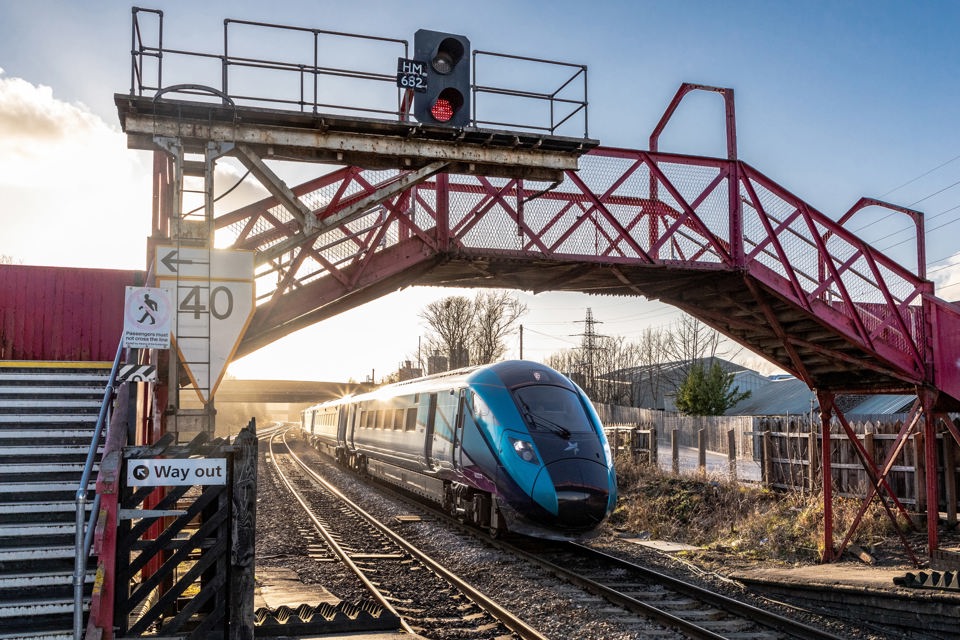

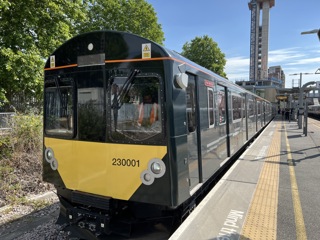
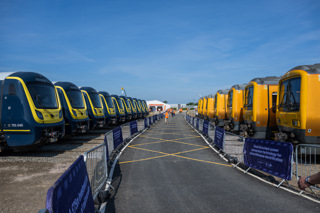
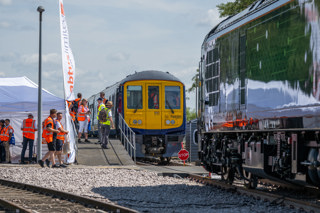
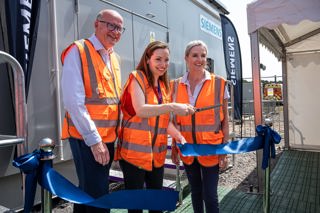
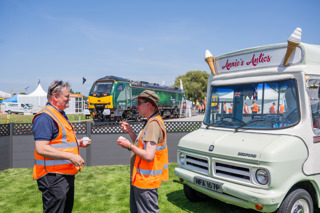











Login to comment
Comments
No comments have been made yet.